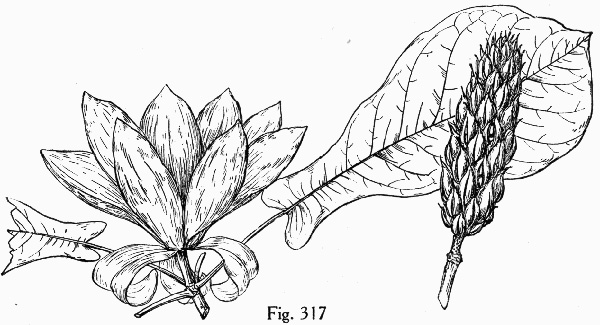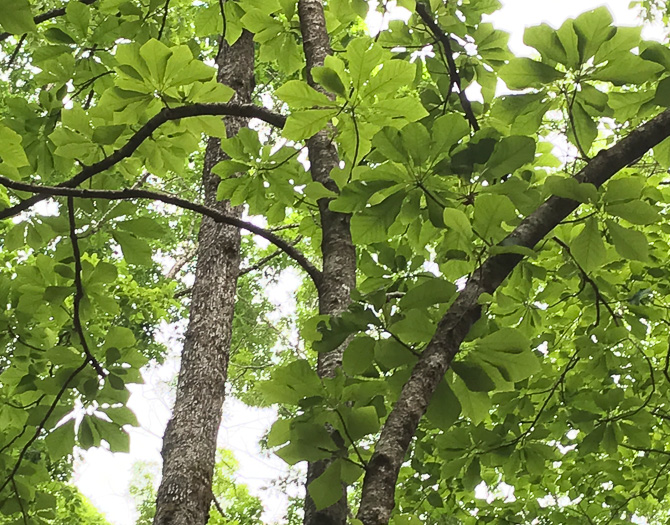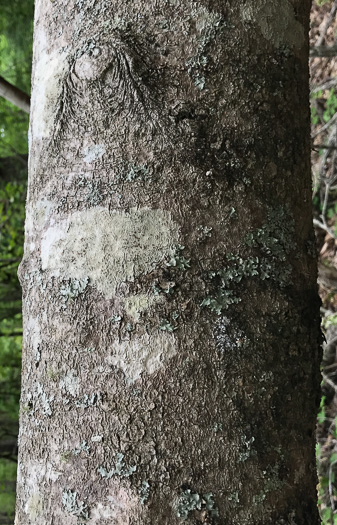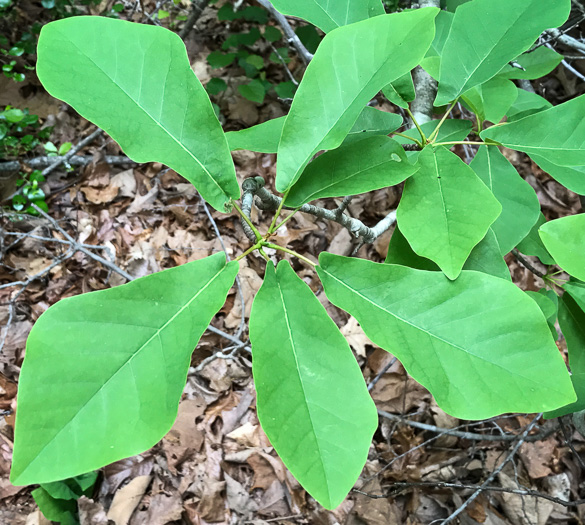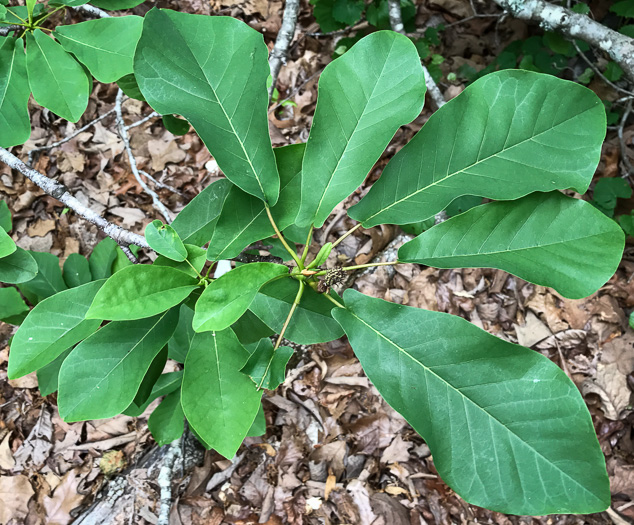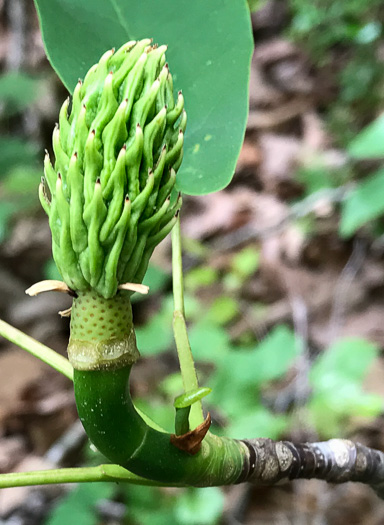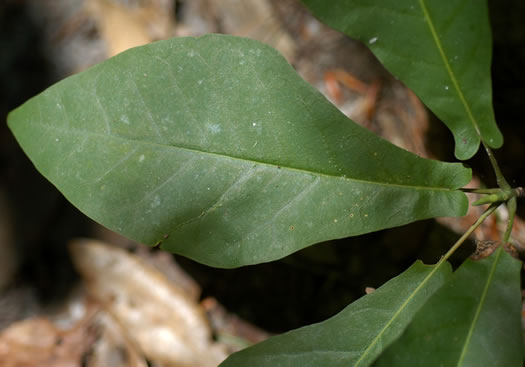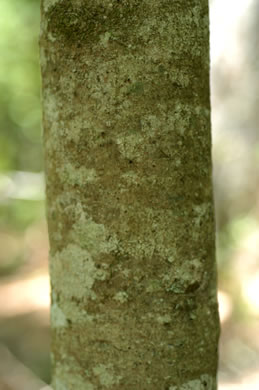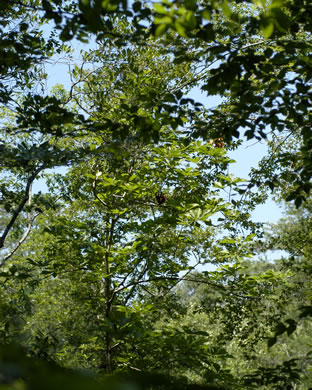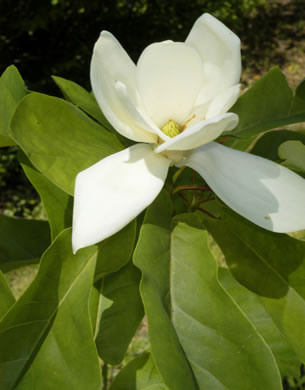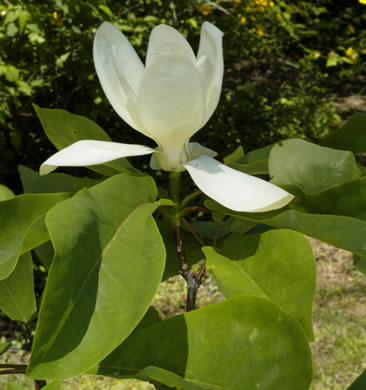Spermatophytes (seed plants): Angiosperms (flowering plants): Magnoliids: Magnoliales
WEAKLEY'S FLORA OF THE SOUTHEASTERN US (4/24/22):
Magnolia pyramidata
FAMILY
Magnoliaceae
Go to FSUS key
Dig deeper at SERNEC, a consortium of southeastern herbaria.
You may enjoy reading South Carolina's Native Magnolias by Richard B. Figlar.
SYNONYMOUS WITH
PLANTS NATIONAL DATABASE:
Magnolia pyramidata
FAMILY
Magnoliaceae
SYNONYMOUS WITH Magnoliaceae hardy in cooler temperatures (Spongberg, 1998)
Magnolia fraseri var. pyramidata
SYNONYMOUS WITH The phylogeny of Magnolia in eastern North America (Tobe, 1998)
Magnolia fraseri ssp. pyramidata
SYNONYMOUS WITH Flora of North America north of Mexico, vol. 3 (1997)
Magnolia pyramidata
SYNONYMOUS WITH VASCULAR FLORA OF THE CAROLINAS (Radford, Ahles, & Bell, 1968) 080-02-005:
Magnolia pyramidata FAMILY Magnoliaceae
SYNONYMOUS WITH Manual of the Southeastern Flora (Small, 1933, 1938)
Magnolia pyramidata
COMMON NAME:
Pyramid Magnolia
To see larger pictures, click or hover over the thumbnails.
Patrick D. McMillan pdmmpyrimidata_arb10
May
Closely related to M. fraseri, but leaves generally shorter (5.5-8.5" long), per Native Trees of the Southeast, An Identification Guide (Kirkman, Brown, & Leopold, 2007).
![]() COMPARE
leaves of Magnolia species
COMPARE
leaves of Magnolia species
Patrick D. McMillan pdmmpyramidata_wl2
Month Unknown
Flowers only 3.5-4" across when fully expanded, per Native Trees of the Southeast, An Identification Guide (Kirkman, Brown, & Leopold, 2007).
WEAKLEY'S FLORA OF THE SOUTHEASTERN US (4/24/22):
Magnolia pyramidata
FAMILY
Magnoliaceae
SYNONYMOUS WITH
PLANTS NATIONAL DATABASE:
Magnolia pyramidata
FAMILY
Magnoliaceae
SYNONYMOUS WITH
Magnoliaceae hardy in cooler temperatures (Spongberg, 1998)
Magnolia fraseri var. pyramidata
SYNONYMOUS WITH
The phylogeny of Magnolia in eastern North America (Tobe, 1998)
Magnolia fraseri ssp. pyramidata
SYNONYMOUS WITH
Flora of North America north of Mexico, vol. 3
Magnolia pyramidata
SYNONYMOUS WITH
VASCULAR FLORA OF THE CAROLINAS (Radford, Ahles, & Bell, 1968) 080-02-005:
Magnolia pyramidata
FAMILY
Magnoliaceae
SYNONYMOUS WITH
Manual of the Southeastern Flora (Small, 1933, 1938)
Magnolia pyramidata
If a search such as "Carex leptalea var. leptalea" doesn't deliver the results you want, try "Carex leptalea".
Or, to minimize chances of a misspelling, try just "Carex le".
Less is more: If "pencil flower" doesn't deliver the results you want, try "pencil".

